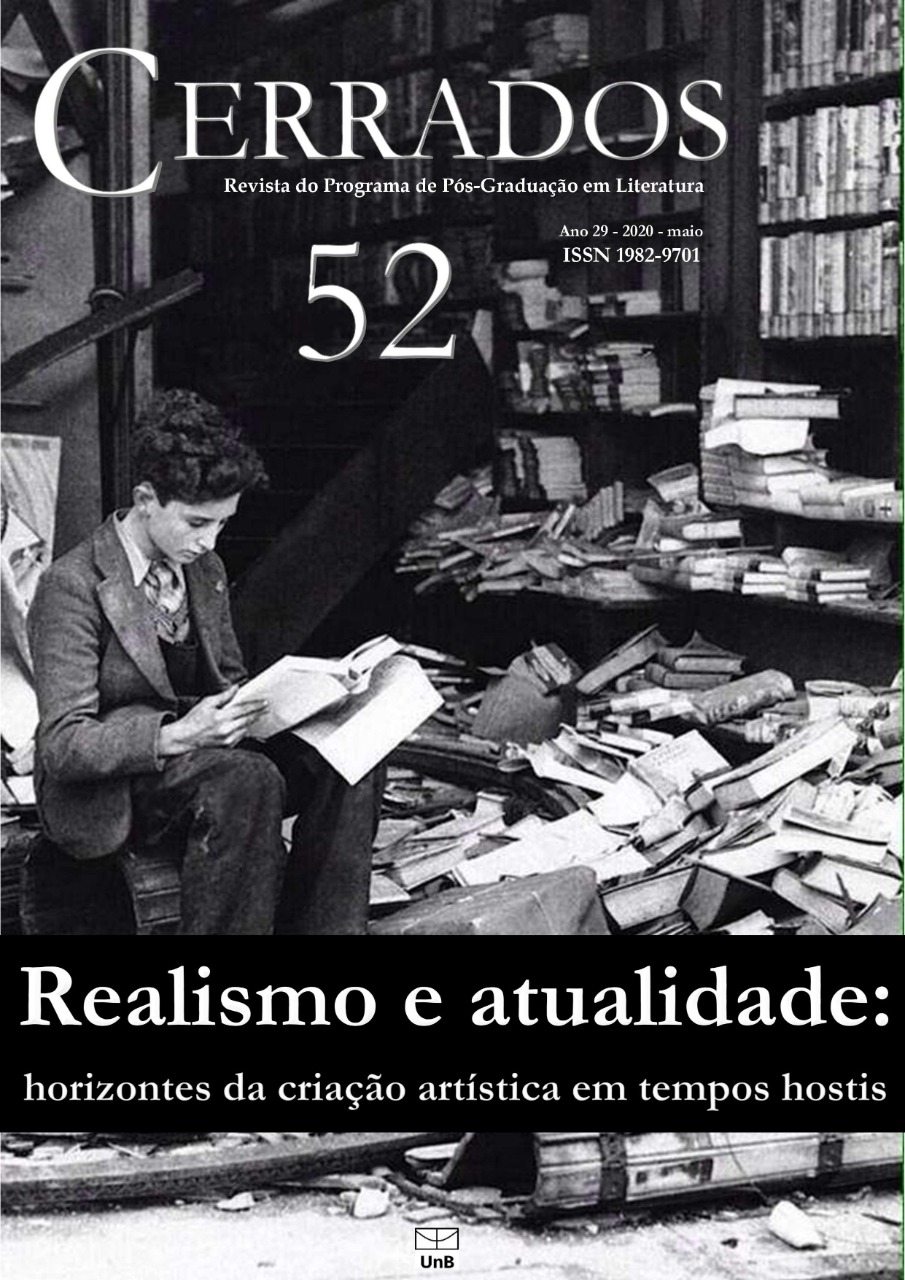The PATH OF ERNEST HEMINGWAY TOWARDS THE CRITICAL REALISM OF A FAREWELL TO ARMS
Keywords:
Ernest Hemingway. Realismo crítico. Literatura americana. György Lukács.Abstract
This article deals with the Ernest Hemingway’s novels from its start till the completion of A Farewell to arms, in 1929, his thrid novel. The intention is to discover the ways that led Hemingway towards the achievement of the critical realism found in this novel. The article will get through the novelist's initial thrusts in building the epic. Within its limits, this text is not intended to overflow the boundary of the novel, leaving aside the short stories that Hemingway wrote. Moreover, its limit ends in A Farewell to arms and does not intend to analyze his later work.
Downloads
References
CARLI, Ranieri. A estética de György Lukács e o triunfo do realismo na literatura. Rio de Janeiro: Ed. UFRJ, 2012.
DODMAN, Trevor. “Going all to pieces”: A farewell to arms as trauma narrative. Twentieth Century Literature, v. 52, n. 3, pp. 249-274, 2006.
FLANAGAN, John T. Hemingway's Debt to Sherwood Anderson. The Journal of English and Germanic Philology, v. 54, n. 4, pp. 507-520, Oct., 1955.
GANZEL, Dewey. A farewell to arms: the danger of imagination. The Sewanee Review, v. 79, n. 4, pp. 576-597, Autumn, 1971.
GASPAROTTO, Bernardo; BARBOSA, Dalila. A constituição do herói de Adeus à s armas, de Ernest Hemingway. Revista Temática, ano XV, n. 3, NAMID/UFPB, pp. 85-99, Março/2019.
HENN, Judith Siegel. The disturbing of categories: Hemingway’s manipulation of Fielding, Turgenev, and Anderson in his parody The torrents of spring. Thesis for Doctor of philosophy. Departament of English language and literature. University of Haia. November, 2004.
HEMINGWAY, Ernest. O sol também se levanta. Rio de Janeiro: Civilização Brasileira, 1971.
____. As torrentes da primavera, seguido de Um gato à chuva e outros contos. Porto: Porto Editora, 2016.
____. Adeus às armas. Rio de Janeiro: Bertrand Brasil, 2017.
LUKÁCS, György. Ensaios sobre literatura. Rio de Janeiro: Civilização Brasileira, 1968.
____. Introdução a uma estética marxista. Rio de Janeiro: Civilização Brasileira, 1968a.
____. Solzhenitsyn. Cambridge: MIT Press, 1971.
____. Estética I: la peculiaridad de lo estético. Barcelona; México, DF: Grijalbo, 1982. 4 v.
MESSENT, Peter. Ernest Hemingway. New York: Palgrave Macmillan, 1992.
OLDSEY, Bernard. The genesis of A Farewell to arms. Studies in American Fiction, v. 5, n. 2, pp. 175-185, Autumn, 1977.
RITCHIE, Michael John. Ernest Hemingway’s early fiction: the emergence of a style and a point of view. Thesis of master in arts of English. Massey University, New Zealand, 1971.
RUSSELL, H. K. The catharsis in “A farewell to arms”. Modern Fiction Studies
, v. 1, n. 3: Ernest Hemingway, August, pp. 25-30, 1955.
STRONG, Amy. Race and identity in Hemingway’s fiction. New York: Palgrave Macmillan, 2008.
____. Race and Ethnicity: American Indians. In: MODDELMOG, Debra; GIZZO, Suzanne del (orgs). Ernest Hemingway in context. Cambridge: Cambridge University Press, 2013, p. 323-332.
TANGENDAL, Ross. Designed to Amuse: Hemingway's The Torrents of Spring and Intertextual Comedy. MidAmerica, v. 41, p. 11-22, 2014.
Downloads
Published
How to Cite
Issue
Section
License
Copyright (c) 2020 Revista Cerrados

This work is licensed under a Creative Commons Attribution 4.0 International License.
Proibida a reprodução parcial ou integral desta obra, por qualquer meio eletrônico, mecânico, inclusive por processo xerográfico, sem permissão expressa do editor (Lei n. 9.610 de 19/2/1998 )



